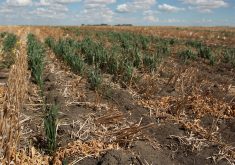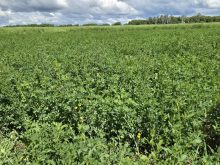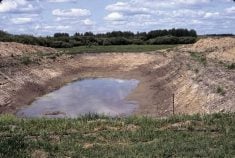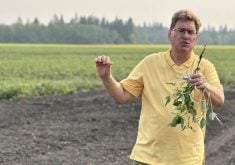Drought is often associated with the Dirty Thirties, but significantly dry conditions have been commonplace for centuries
Was the 1930s really the worst drought ever?
With every dry spell, comments are made about the Dirty Thirties. It remains a landmark in Canadian history for its effect on all aspects of life, especially in our agriculturally dominated Prairies.
We’ve experienced more recent droughts, such as in the late 1950s, early 1960s, 1980s and 1999-2005. The drought of 2001-02 spanned the entire southern half of the country from British Columbia to the Maritimes.
But scientists say that 20th century droughts were relatively moderate and short-lived compared to those of previous centuries.
Read Also
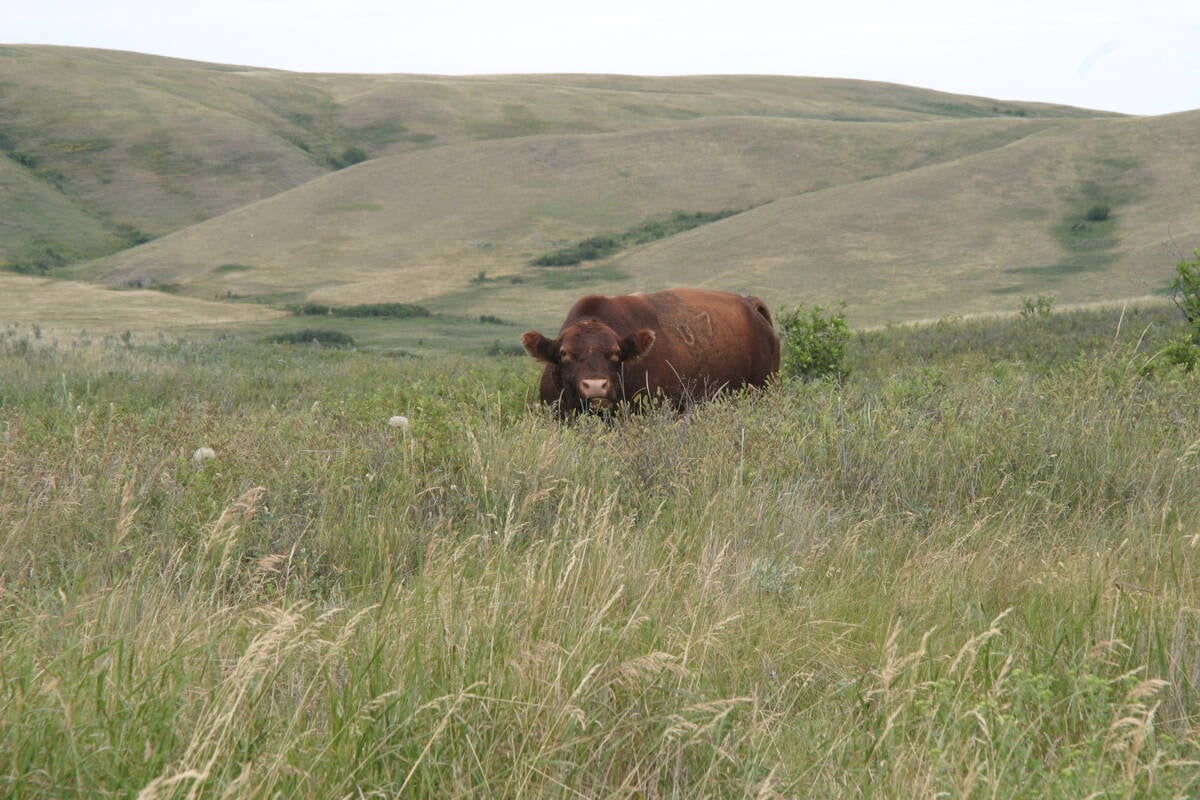
Saskatchewan puts crown land auction on hold
Auctions of Saskatchewan crown lease land are once again on hold.
Analyses of tree rings and lake sediment cores indicate severe and prolonged drought periods lasting several decades on the southern Prairies in the early 1600s, late 1700s and mid-1800s. During the last drought on this list, John Palliser led an exploration across Western Canada to map it, gather data on resources and analyze the feasibility of building roads. In his report, he defined an irregular triangle of arid grassland stretching roughly from Cartwright, Man., to Lloydminster, Sask., and Calgary and Cardston, Alta., which today is known as the Palliser Triangle.
He claimed this area was too dry to support human habitation. The rich fertile belt surrounding this area, he said, would be well-suited to agriculture.
Eager to populate the country quickly, in 1872 Ottawa passed the Dominion Lands Act, opening the way for wannabe farmers to snatch up more than 600,000 homesteads and fill the four western provinces with farms. This act also defined land set aside for First Nations people. Metis land was organized outside this act, using the scrip system.
The First World War triggered a high demand for food to export to Europe, thus raising wheat prices. Farmers responded by cultivating land formerly used only for grazing and drained their wetlands.
Before long, they began to see the need for water conservation. The use of summerfallow, in rotation with cropped fields became popular, the theory going that if the soil was pulverized on the surface, it would form a crust that sealed in moisture for the next year’s crops. Greater mechanization boosted production and aided in increased pulverization of topsoil. Widespread cultivation of open, pulverized fields created a perfect storm situation for an eventual drought.
Then 1929 happened. The stock market crash came and brought a friend called drought. Wheat prices dropped from $1.03 per bushel in 1928 to 26 cents per bu. in 1932. Saskatchewan experienced the lowest price for wheat in history. The province’s income plummeted by 90 percent within two years. Sixty-six percent of the rural population was forced onto relief. The other western provinces were technically bankrupt from 1932 onward.
Over the 11-year span from 1930-1940, a large part of the region saw 15 to 25 percent less precipitation than normal. This translates into 50 to 60 inches of moisture. Plagues of grasshoppers and hailstorms also caused huge crop failures. High winds picked up the loose topsoil, along with seed in many cases, and created the enormous clouds of dust that gave the Prairies the name Dust Bowl.
In 1935, the Prairie Farm Rehabilitation Act was formed to create remedial programs: shelter belts, strip farming, community pastures, and water retention solutions, such as dugouts and small dams. In the same year, the Canadian Wheat Board was established to help farmers market grain and set a minimum price for wheat. The export monopoly ended for wheat in 2012.
Based on the evidence, scientists tell us that droughts are a recurring phenomena.
The size and intensity of the 1961 drought exceeded that of the Dirty Thirties. In 1961, the driest parts of Saskatchewan received only 45 percent of normal precipitation.
The late 1980s were also extremely dry and warm. In 1988, southern Saskatchewan received only 50 percent of normal precipitation and recorded one of its hottest summers ever.
Saskatchewan recorded its driest year in more than a century in 2001 and recorded its most recent drought period from 2000-03.
In climatic terms, the Dirty Thirties wasn’t the worst drought, but because of ill-informed farming practices and little to no government assistance or contingency plan, it caused the most drastic impact on human life.
Today, informed farming, environmental research and government programs aid in preventing a repeat of the Dirty Thirties.
However, there is now concern that droughts will increase in frequency with climate change. Research and planning are essential to alleviate the severity of another Dust Bowl situation.




